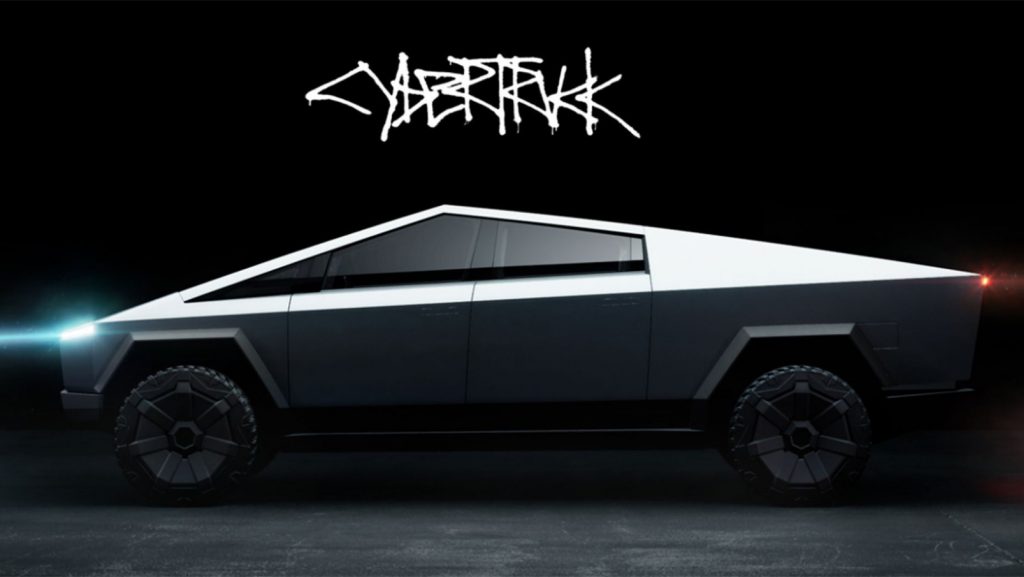I’m always interested in automotive-related tech, so I’m always interested in reading about what Tesla is up to.
Much of the news of late has been about the Tesla Cybertruck, which was announced a while back to great fanfare. More recently, they’ve announced a release date – it goes into full production in 2022 – and have been taking orders. So far, they’ve received 1.25 million pre-orders for an electric truck that sort of reminds me of a Batmobile.
I don’t have a lot to say about all the tech in there, but this caught my eye:
…the optional Integrated Tonneau Cover, is going to have a twist – it will also be a solar panel that provides electricity when deployed, or rather a series of 110 separate solar cells. According to a patent
filed by Tesla with the US Patent Office,
When the tonneau cover is deployed to cover the bed and the solar electric cells that make up the slats are facing the sun, the battery within the electric vehicle can be charged by solar electric cells.
When the truck bed cover is in a closed position, it is configured to recharge the battery pack, the closed position of the truck bed cover enabling the plurality of solar electric cells to face a sun. (Source: InsideEVs)
From what I know about solar-powered vehicles, they have to sit in the sun for an awful long time to translate into any appreciable mileage. Which is not to say that it won’t be viable at some point.
What I found more intriguing was that Tesla was recently granted a patent for its ‘Improper Seatbelt Usage Detection’ (ISUD). There are already, of course, buckle-your-seat-belt warning systems in cars and trucks. But it’s easy enough to fake that you’re using your seatbelt, and the ISUD will solve that problem:
The ISUD system will rely on sensors built into the seats and the belt itself, thus making the system considerably harder to fool. When it will detect improper seatbelt use:
A warning may be a text message displayed on display system of vehicle infotainment system, or an alarm sounding on vehicle infotainment system, a text message to registered mobile number of occupant, etc. (Source: InsideEVs; the second paragraph is from the patent filing.)
The system may also perform other actions to help make sure people are using seatbelts correctly.
And then there’s this bit of news:
Tesla is dropping the forward radar sensor from the Model 3 and Model Y, beginning the rollout of what the company calls Tesla Vision, which will make Tesla’s driver-assist systems rely almost completely on the car’s cameras. CEO Elon Musk has been hyping “pure vision” for months now and seems confident that it will be able to eventually get Tesla to Level 5 autonomy. (Source: Car and Driver)
At present, Tesla’s Autopilot system deploys a combination of cameras, ultrasonic sensors, and forward radar:
The new cars will rely mostly on the car’s cameras and its computer’s processing ability to use Autopilot and the suite of features currently included in the Full Self-Driving (FSD) package. Other automakers use radar for their adaptive cruise control systems, and they benefit by being able to operate in inclement weather and direct sunlight.
When the new “vision-only” system is used, some existing features will no longer be available. One is Smart Summon, which lets an owner get their car out of a tight parking space without having to get in the car. Another is Autosteer, which is used to keep your car in its lane. That feature will be limited to speeds of 75 mph, down from the prior 90 mph. (Not that anyone needs to be driving 90 mph…) These features will be restored over time.
In case you’ve forgotten, that Level 5 autonomy that “pure vision” is enabling is ‘no driver required at all.’ It really will be coming at some point.

 filed by Tesla with the US Patent Office,
filed by Tesla with the US Patent Office,